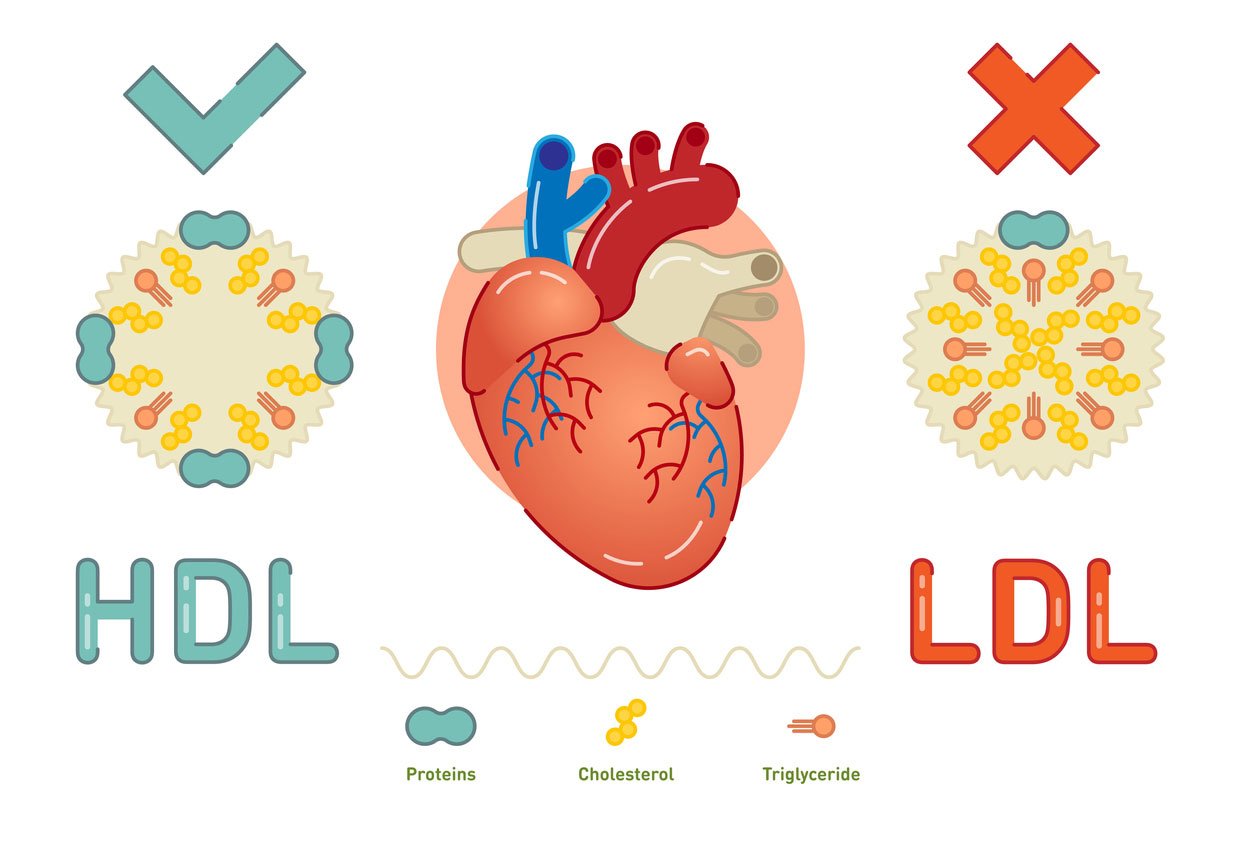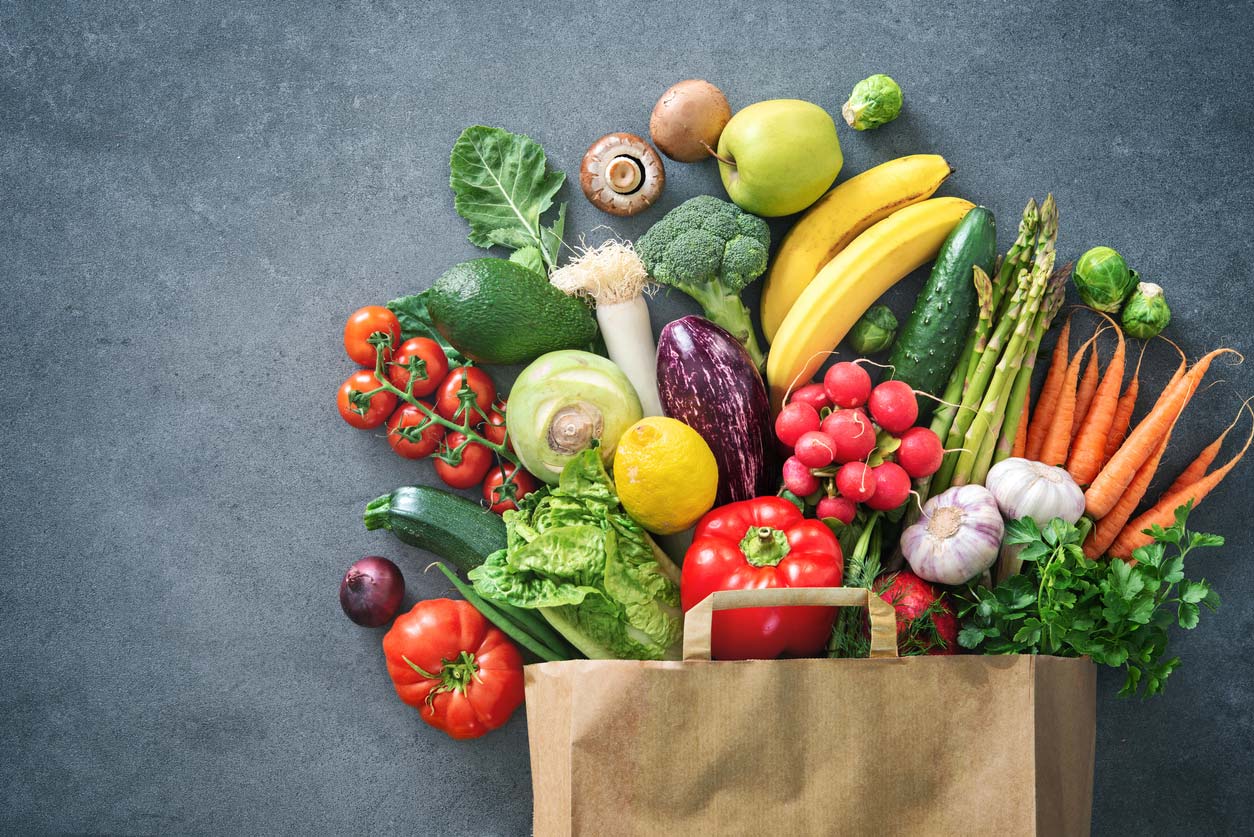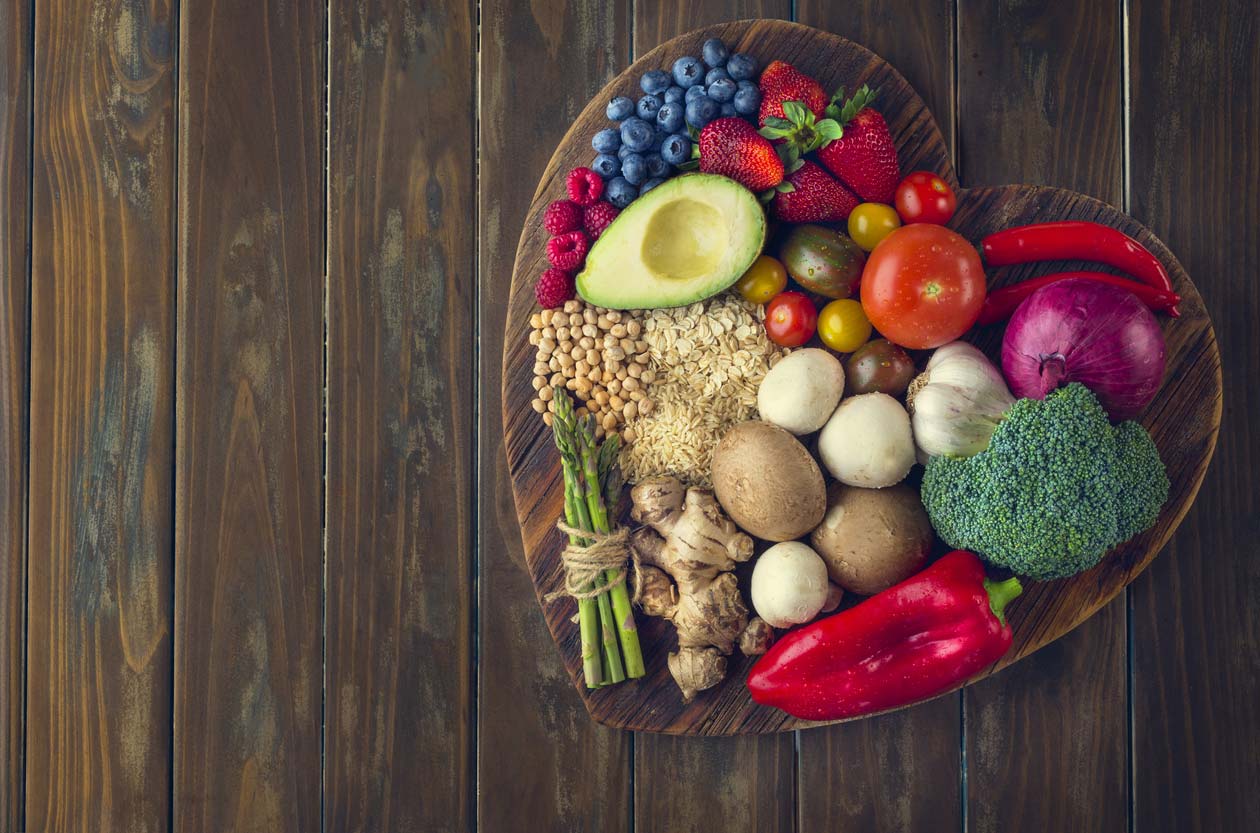by Ocean Robbins: There may be no other nutrition topic as heavily debated in recent years as cholesterol…
With all of the mixed messages circulating in headlines, news media, statements from health professionals, and even research studies, it’s no wonder that many people are unsure what to think. What do your cholesterol numbers mean, and how are they influenced by the foods that you eat? Should you be paying attention to cholesterol guidelines, and how does cholesterol impact your health?
What is Cholesterol?
Cholesterol is a fat or lipid present in nearly every cell of your body. Interestingly, you’ll find about 25% of your body’s cholesterol in your brain. Cholesterol is made primarily in your liver and serves many important functions, such as making hormones and vitamin D, building cellular walls, and supporting healthy digestion by helping to produce bile.
So that answers one of the questions of the giant cholesterol debate: yes, cholesterol is absolutely necessary for health. Without it, your body can’t function. So it’s a good thing you make all the cholesterol you need. Cholesterol is not considered an essential nutrient. You don’t need to get it from food or supplements, unlike vitamins and minerals that you can’t make by yourself. The current debate centers around two questions: whether high blood cholesterol levels are a risk factor for disease and premature death and whether consuming cholesterol from foods can raise the levels of cholesterol circulating in your blood.
Types of Blood Cholesterol

The umbrella term “cholesterol” is often used to describe the fats in your blood and is frequently given a negative connotation. However, cholesterol actually moves through your body via biochemical compounds called lipoproteins, all of which have different transportation jobs.
There are some important distinctions to make between the types of lipoproteins and cholesterol circulating throughout your bloodstream.
At the risk of triggering memories from high school biochemistry, here’s an overview of the five main types of lipoproteins:
Lipoproteins
- Chylomicrons, also known as ultra low-density lipoproteins or ULDL cholesterol: These carry triglycerides from your intestines to your liver, muscle, and fat tissues.
- Very low-density lipoprotein or VLDL cholesterol: These carry newly created triglycerides from your liver to your fat tissues.
- Low-density lipoprotein or LDL cholesterol: These carry cholesterol, triglycerides, and other fats all throughout your body. LDL is often called “bad” cholesterol, because high levels in the bloodstream may be related to a higher risk for atherosclerosis, or the buildup of plaque in your arteries that can lead to heart disease.
- High-density lipoprotein or HDL: These act like a garbage truck, collecting the fats distributed by LDL from your bodily tissues and cells and bringing them back to your liver to be processed and removed. HDL is often called “good” cholesterol because higher levels of HDL correlate with lower rates of atherosclerosis.
- Intermediate-density lipoproteins or IDL cholesterol: These are intermediaries between LDL and VLDL, and typically aren’t even detected in your blood when you haven’t eaten in a while.
- Total cholesterol: This refers to the combination of all types of cholesterol circulating in your blood and, while a helpful marker, doesn’t necessarily give a super helpful picture of your “good” or “bad” cholesterol numbers or what this may mean for your health.
While chylomicrons, LDL, IDL, and VLDL are all pro-atherogenic — meaning they promote the buildup of plaque in your arteries — HDL has the opposite effect.
If some of these sound unfamiliar to you, you’re not alone. When it comes to the cholesterol in your blood, we typically hear about HDL and LDL the most. Triglycerides are often highlighted as an additional fat to pay attention to as a biomarker of health (for the most part, the lower, the better).
Cholesterol Guidelines
What should your blood lipid numbers look like? Below are the recommendations for optimal HDL, LDL, triglycerides, and total cholesterol levels for adults, according to the 2018 guidelines published in the journal Circulation.
Note that cholesterol numbers are measured in mg/dL, which stands for milligrams per deciliter. The ideal recommendations are a fasting measurement, which is most accurate, as eating and drinking can affect your numbers.
- Total Cholesterol: Less than 200
- HDL Cholesterol: 60 or higher is optimal (below 40 is considered to present an increased risk for heart disease)
- LDL Cholesterol: Below 100 (and below 70 if you have coronary artery disease)
- Triglycerides: Below 150 has been shown to lower risk for heart disease (and ideally below 100 for fasting levels)
How Does Blood Cholesterol Impact Your Health?

If there’s too much cholesterol in your blood, especially LDL, it can start to accumulate on your artery walls as a waxy substance called plaque. As more plaque builds up, your arteries become narrower and can clog. This makes it difficult for your blood to keep flowing through them. A complete blockage of your arteries with plaque can lead to a blood clot, a stroke, or a heart attack.
Having high LDL cholesterol levels in your blood is linked to a higher risk for heart disease, as is having a low level of HDL cholesterol.
Having high blood levels of LDL cholesterol and total cholesterol may lead to other negative consequences in your body, such as an increased risk for gallstones, nerve issues (especially if you have diabetes), and increased risk for dementia.
You can test your blood cholesterol levels through a standard blood test. The American Heart Association recommends that adults have their cholesterol numbers checked at least every 4-6 years starting around age 20.
What Causes High LDL Cholesterol Levels?
There are a number of factors that may cause your LDL cholesterol to rise and stay high over time.
Saturated fat intake can increase your LDL cholesterol levels. Food containing saturated fat include dairy products, meat, poultry, seafood and fish, eggs, coconut, palm oil, and many baked goods, fried foods, and fast food items.
Your genetic makeup may also put you at a higher risk of having higher than desired cholesterol levels. In other words, if you have a family history of high LDL cholesterol, it’s possible that there may be some DNA-related reasons for this. Around 10-15% of the population are “hyper-absorbers” of dietary cholesterol, for instance. Keep in mind that if you do have a genetic predisposition towards elevated LDL cholesterol levels, this doesn’t mean it’s out of your control. It just means that you may need to pay more attention and that you have a lot to gain from optimized diet and exercise habits.
Other factors that may raise your cholesterol include:
- Advancing age
- Being male
- Being a female post menopause
- Obesity or being overweight
- Inactivity
- Smoking
- Taking certain medications (such as birth control pills, hormone replacement therapy, steroids, and blood pressure medications such as beta-blockers and diuretics)
Is Dietary Cholesterol Bad for You?

We’ve known for some time that certain foods, such as red meat and eggs, can increase your risk of cardiovascular disease. These foods are high in cholesterol, so naturally, researchers assumed that dietary cholesterol contributed to higher blood cholesterol levels and, thus, more heart attacks.
There is some evidence of a direct relationship between dietary cholesterol intake and higher blood cholesterol levels. And some studies tell us that people with type 2 diabetes or metabolic syndrome, cholesterol-based vascular disease, or a history of heart attack, stroke, or peripheral artery disease, would do well to lower their dietary cholesterol consumption.
But now, a growing body of evidence is implicating saturated fat, more than dietary cholesterol, as a primary driver of elevated blood cholesterol levels.
In some ways, though, it’s a moot point whether dietary cholesterol is the culprit or whether it looks that way because foods high in cholesterol are also high in saturated fat. The fact is that the same foods often contain both dietary cholesterol and saturated fat. It’s like arguing that hood ornaments are dangerous because so many people are killed by them when they’re attached to speeding cars. The hood ornament — in this case, the cholesterol — may be more of an accomplice than a cause. But at the end of the day, it’s the whole package that matters. And when it comes to cholesterol guidelines, arguing about which part of a speeding automobile is dangerous is fairly academic, in some respects. Whether you’re worried about hood ornaments, bumpers, or tires, if you’re a pedestrian, the best advice is still going to be to stay off the freeway.
What Foods Have the Most Cholesterol?

Cholesterol is found only in animal products. Even though some plant foods are high in saturated fat — such as coconut — plants do not contain any cholesterol.
Just like you and me, animals produce cholesterol in their bodies. When we eat animal-derived products, we consume some of the cholesterol that they produced and stored.
Some of the foods with the highest levels of cholesterol include:
- Eggs, especially the egg yolk
- Cheese, especially full-fat varieties
- Shellfish, especially shrimp
- Steak
- Organ Meats, like liver and kidney
- Processed Meats, such as bacon, sausage, beef jerky, salami, cold cuts, and deli slices
As it happens, all of these also happen to be high in saturated fat.
8 Foods That Can Lower Blood Cholesterol Levels

If you want to follow cholesterol guidelines, and are looking to avoid cholesterol in your diet, you can eat all of the fruit, vegetables, grains, nuts, seeds, beans, peas, and lentils you want.
Not only do these foods not contain cholesterol, but they can also help lower high LDL and total cholesterol levels. They accomplish this feat in large part because plant foods are high in soluble fiber.
Soluble fiber binds to the cholesterol particles in your small intestine, preventing them from traveling to your bloodstream and other parts of your body. Instead, soluble fiber removes cholesterol by way of excretion through your colon.
If you want to lower your cholesterol or help to prevent it from rising in the first place, it’s a good idea to make some of the following foods the foundation of your diet.
1. Legumes
Legumes include beans, peas, and lentils.
A 2014 review of 26 randomized controlled trials, published in CMAJ, found that eating just a ½ cup of legumes per day can lower LDL cholesterol by an average of 6.6 mg/dl, compared to the effects of not eating legumes at all. (Read more about beans and legumes here.)
2. Dark Chocolate
Cocoa is the main ingredient in dark chocolate. In a 2015 study published in the British Journal of Nutrition, 100 healthy adults aged 35-60 years old drank a cocoa beverage twice daily for one month. After that, their blood cholesterol was measured. Those who drank the cocoa beverage experienced a 6.5 mg/dl decrease in their LDL cholesterol, an increase in HDL cholesterol, and a reduction in blood pressure compared to the placebo group.
This doesn’t mean your favorite dark chocolate candy bar just turned into a health food. Why? Because the added sugar (among other ingredients) in many candy products can negate the health benefit of the cocoa. Instead, find a chocolate bar that has a high percentage of cocoa, ideally around 75-85% or more. (For more on the health and ethical impacts of chocolate, see our article here.)
3. Whole Grains
Whole grains are grains that still contain all their nutrients and haven’t gone through the refining process. Some examples of whole grains include whole wheat, barley, oats, quinoa, bulgur, and brown rice.
Whole grains are high in soluble fiber. Barley and oats are especially good sources of a type of soluble fiber called beta-glucan, which has been studied more for its effectiveness in lowering cholesterol.
A 2016 review published in BMJ looked at 45 studies and determined that eating three servings of whole grains daily could lower the risk of stroke and heart disease by up to 20%. What’s more, eating up to seven servings of whole grains per day had an even bigger benefit. (Read more about grains here.)
4. Nuts and Seeds
Nuts and seeds are high in monounsaturated fats, which are known to help lower cholesterol levels. Specifically, flaxseeds and chia seeds are rich in omega-3 fatty acids, a type of polyunsaturated fat linked to heart health. And almonds are rich in L-arginine, an amino acid that helps produce nitric oxide in your body and can support healthy blood pressure.
Nuts — especially pistachios, macadamia nuts, cashews, and almonds — are also high in compounds called phytosterols, which resemble cholesterol and actually block its absorption in your intestines. It’s like you’re gumming up the keyhole, so cholesterol can’t open the door into your bloodstream. Very clever, phytosterols! (Read more about nuts and seeds here.)
5. Avocados
In addition to being high in fiber, avocados are rich in monounsaturated fats, which have cholesterol-lowering effects.
A study published in the Journal of the American Heart Association in 2015 found that eating one avocado per day lowered high LDL cholesterol levels among overweight and obese adults, more than those who didn’t eat any.
Furthermore, a 2016 meta-analysis examined 10 studies, finding that replacing other dietary fats with avocados was linked to lower levels of total cholesterol, triglycerides, and LDL cholesterol. (Read more about avocados here.)
6. Dark Leafy Green Vegetables
Dark leafy greens like kale, spinach, broccoli, and collards, are high in carotenoids such as lutein, which have been linked to a reduced risk for heart disease. Carotenoids act like antioxidants in your arteries, protecting them from plaque buildup. Animal studies also suggest that lutein can lower LDL cholesterol levels.
Some research suggests that dark leafies may also bind to bile acids, causing your body to excrete excess cholesterol. This is especially true when you steam them, even more so than consuming them raw.
7. Berries and Other Fruit
Berries — as well as apples, citrus, and grapes — contain a specific type of soluble fiber called pectin. Pectin has been studied for its cholesterol-lowering effects, potentially reducing high levels by up to 10%.
Berries are, of course, also great sources of antioxidants that promote heart health, making it a great idea to incorporate red, blue, and purple varieties into your diet. (Read more about blueberries here.)
8. Garlic and Onions
Garlic contains a potent plant compound called allicin, which has been shown to have protective effects on heart health.
Research shows that garlic can help lower high blood pressure and potentially promote healthy blood cholesterol levels.
Onion peels are especially high in heart-healthy compounds. (No, the research subjects didn’t eat the peels; they were consumed in extract form.) Some animal studies have indicated that adding onions to a diet could lower the risk of atherosclerosis. (For more on garlic and onions, click here.)
The Verdict on Cholesterol

Keeping your heart healthy is about more than one single nutrient — it’s about your overall dietary pattern and other lifestyle choices, like physical activity, not smoking, and stress management. As researchers continue to learn more about cholesterol and saturated fat, we will likely continue to hear more updates on how much dietary cholesterol may (or may not) influence our health outcomes. Nutritional science is constantly evolving with the outcomes of more studies, and health advice sometimes changes as a result. But we can all do well to incorporate colorful, fiber-rich, and nutrient-dense whole plant foods into our diets and to limit our intake of processed foods, added sugars, and foods that are high in saturated fats. After all, even if cholesterol guidelines change, the advice to eat more plant foods is never going out of style.



















































